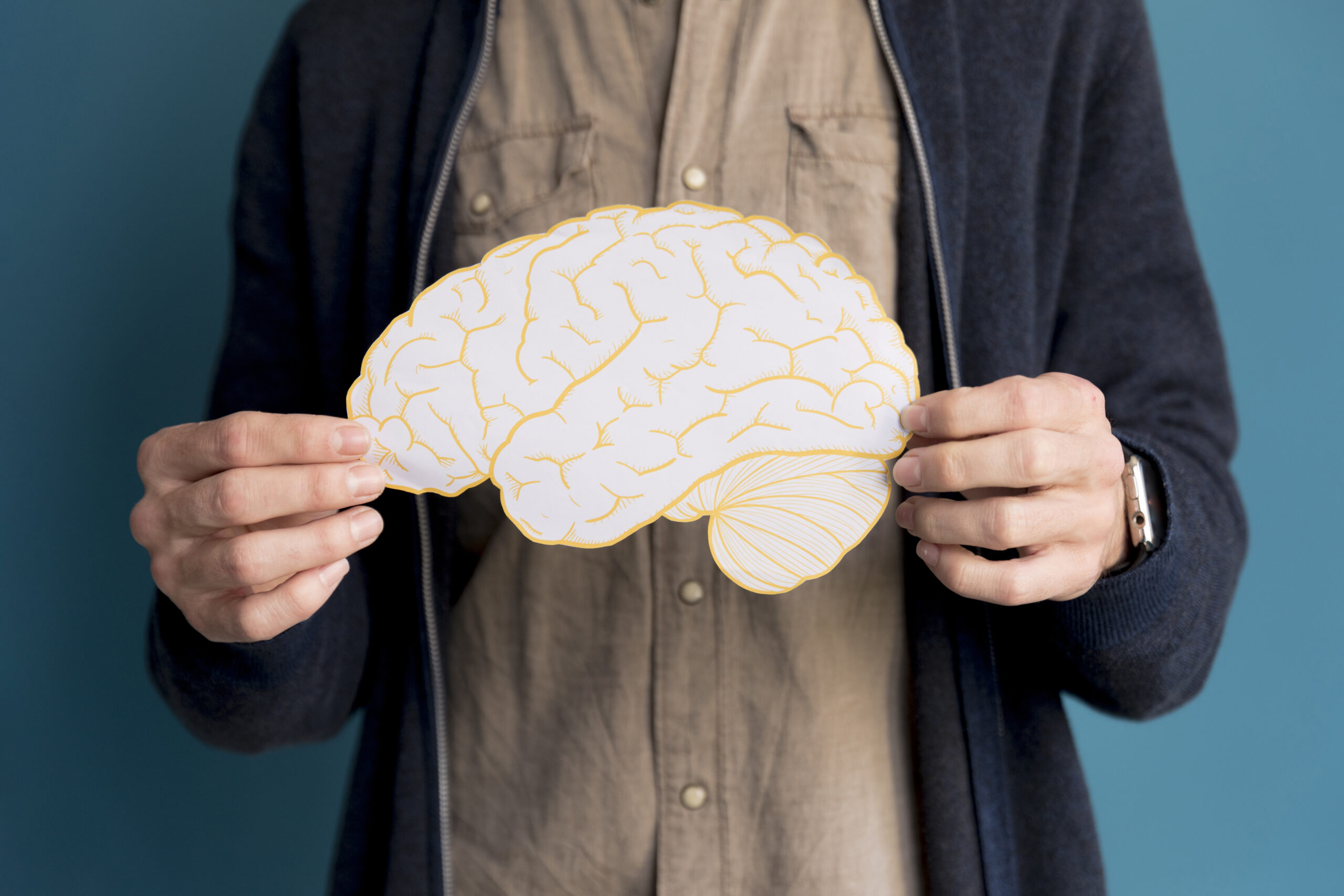Red light therapy, also known as photobiomodulation or low-level laser/light therapy (LLLT), is widely recognized for its ability to enhance overall wellness and treat various physical conditions. By stimulating mitochondrial activity and boosting cellular energy, red light therapy reduces inflammation, improves circulation, activates stem cell production, and accelerates the body’s natural healing processes. But beyond its physical benefits, can red light therapy significantly impact brain health? The science says yes.
Can Red Light Penetrate the Skull?
Yes, red light therapy, particularly near-infrared (NIR) light, can penetrate the skull and reach the brain. This capability allows the light to deliver its energizing and healing benefits directly to brain cells. The effectiveness of red light therapy in treating brain-related conditions is largely dependent on the power density or irradiance of the device used. Devices with higher irradiance levels (measured in milliwatts per square centimeter, mW/cm²) are more effective in delivering the light deep into the brain. For brain therapy, an irradiance level close to 200 mW/cm² is recommended to ensure sufficient penetration.
Understanding Brainwaves and Their Importance
Our brains operate through electrical pulses that create brainwaves, which vary in frequency depending on our activities and emotions. These brainwaves are categorized into six basic types:
- Infra-Low Waves (less than 0.5 Hz): Control basic brain functions, largely independent of external stimuli.
- Delta Waves (0.5 to 3 Hz): Associated with deep, restorative sleep.
- Theta Waves (3 to 8 Hz): Present during REM sleep and are linked to dreaming and internal focus.
- Alpha Waves (8 to 12 Hz): Occur when we’re relaxed, yet alert, often during creative activities.
- Beta Waves (12 to 38 Hz): Dominant when we’re awake and focused, but can also be associated with stress.
- Gamma Waves (38 to 42 Hz): Involved in deep thinking and concentration, but can lead to feelings of frenzy when too high.
Imbalances in brainwave activity can lead to various mental health issues, such as depression, anxiety, and sleep disorders. Red light therapy has been shown to enhance the occurrence of beneficial brainwaves (Delta, Theta, and Alpha) while reducing the presence of stress-inducing Beta waves.
How Red Light Therapy Enhances Cognitive Abilities
Red light therapy offers numerous benefits for brain health, including:
- Improved Cognitive Function: Research indicates that red light therapy can enhance memory, focus, problem-solving skills, and overall mental sharpness. Studies have shown significant improvements in cognitive measures and reaction times in individuals who have undergone red light therapy.
- Treatment of PTSD and Mental Illness: Red light therapy has shown promise in reducing symptoms of PTSD, depression, anxiety, and other mental health disorders. For instance, studies have reported positive effects in veterans with Gulf War Syndrome and accident victims suffering from PTSD.
- Better Sleep and Circadian Rhythm Regulation: Red light therapy can help regulate the circadian rhythm, improving sleep quality by stimulating melatonin production. This makes it a natural remedy for sleep disorders and the negative effects of blue light exposure.
- Support for Degenerative Neurological Diseases: Conditions like Alzheimer’s, Parkinson’s, and Huntington’s disease may benefit from red light therapy due to its ability to stimulate mitochondrial activity and protect neurons from damage.
Healing Traumatic Brain Injuries (TBI) and Strokes
Traumatic brain injuries (TBI) and strokes can cause significant damage to brain cells and function. Red light therapy’s ability to boost cellular energy and promote healing makes it a promising treatment for these conditions. Studies have shown that red light therapy can reduce inflammation, improve cognitive function, and even prevent neurodegeneration following a TBI.
Conclusion: Red Light Therapy’s Potential for Brain Health
Red light therapy is emerging as a powerful tool for enhancing brain health, treating neurological conditions, and improving cognitive function. Its ability to penetrate the skull and positively influence brainwaves and cellular activity makes it a promising non-invasive treatment option for a wide range of brain-related issues.
Before starting any new treatment, including red light therapy, it’s important to consult with a healthcare professional to ensure it’s appropriate for your specific needs. As research continues to grow, red light therapy could become a mainstream option for improving brain health and overall well-being.
Find our range of devices for red light therapy HERE.
Sources:
1. Wu, Jih-Huah, Chang, Wen-Dien, Hsieh, Chang-Wei, Jiang, Joe-Air, Fang, Wei, Shan, Yi-Chia, Chang, Yang-Chyuan, Effect of Low-Level Laser Stimulation on EEG, Evidence-Based Complementary and Alternative Medicine, 2012, 951272, 11 pages, 2012. https://doi.org/10.1155/2012/951272
2. Barrett DW, Gonzalez-Lima F. Transcranial infrared laser stimulation produces beneficial cognitive and emotional effects in humans. Neuroscience. 2013 Jan 29;230:13-23. doi: 10.1016/j.neuroscience.2012.11.016. Epub 2012 Nov 27. PMID: 23200785.
3. Hennessy M, Hamblin MR. Photobiomodulation and the brain: a new paradigm. J Opt. 2017 Jan;19(1):013003. doi: 10.1088/2040-8986/19/1/013003. Epub 2016 Dec 14. PMID: 28580093; PMCID: PMC5448311.
4. Grover F Jr, Weston J, Weston M. Acute Effects of Near Infrared Light Therapy on Brain State in Healthy Subjects as Quantified by qEEG Measures. Photomed Laser Surg. 2017 Mar;35(3):136-141. doi: 10.1089/pho.2015.4036. Epub 2016 Nov 17. PMID: 27855264.
5. Naeser MA, Martin PI, Ho MD, Krengel MH, Bogdanova Y, Knight JA, Yee MK, Zafonte R, Frazier J, Hamblin MR, Koo BB. Transcranial, Red/Near-Infrared Light-Emitting Diode Therapy to Improve Cognition in Chronic Traumatic Brain Injury. Photomed Laser Surg. 2016 Dec;34(12):610-626. doi: 10.1089/pho.2015.4037. PMID: 28001756.
6. Hamblin MR. Shining light on the head: Photobiomodulation for brain disorders. BBA Clin. 2016 Oct 1;6:113-124. doi: 10.1016/j.bbacli.2016.09.002. PMID: 27752476; PMCID: PMC5066074.
